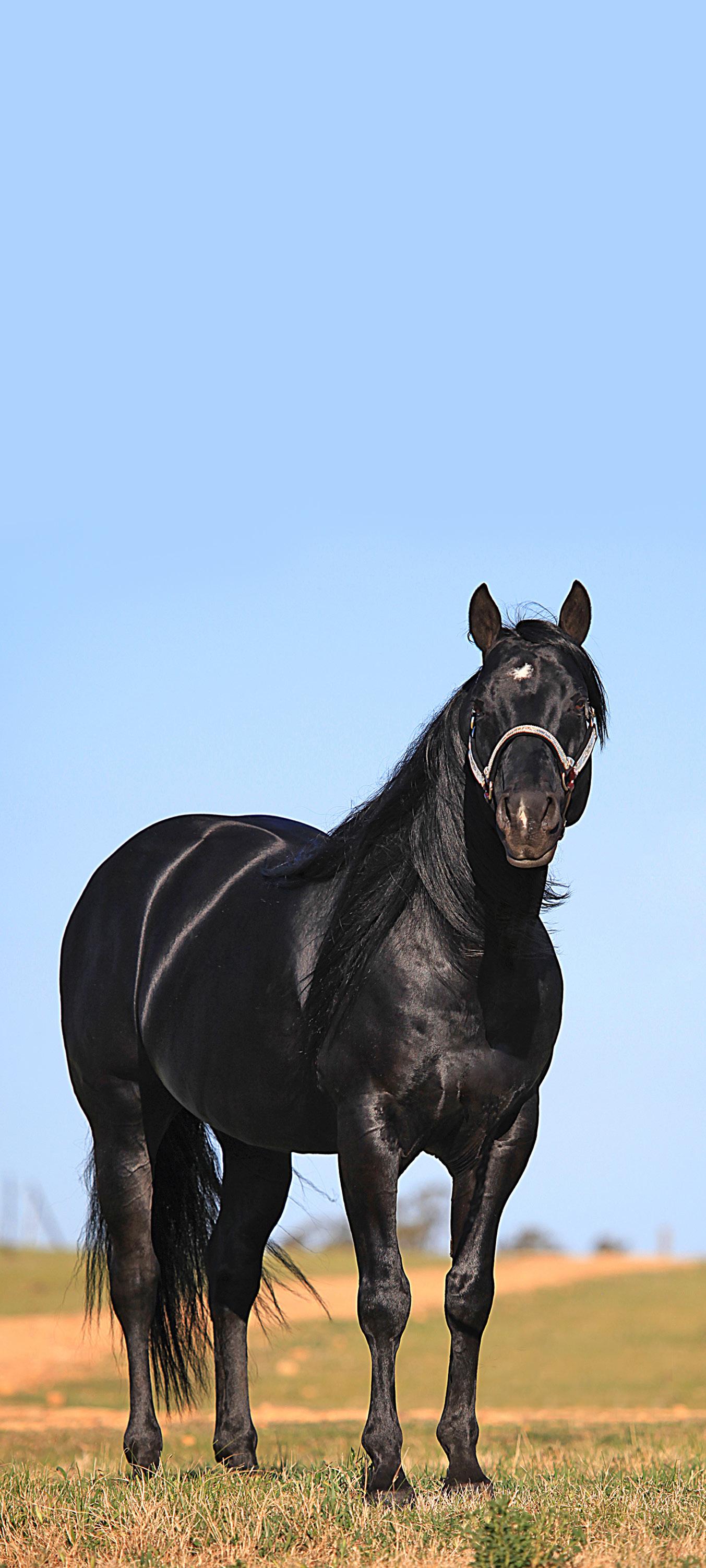
8 minute read
Feature: Colour Genetics
FEATURE
Colour genetics 101
Advertisement
Ever wondered why your horse is the colour that they are? In the first of a two-part series, CHRISTINE ARMISHAW dives deep into the wide and wonderful world of coat colour.
The classic black horse has a black body, black mane, tail and points (Image courtesy Crown K Quarter Horse Stud, photographer Francene Neuendorf). In a rainbow world of colours, coat patterns and markings, the palette your brand-new foal could draw from is seemingly endless. But there is a science behind all this wonderful potential, and today you get to put on your white lab coat and learn all about coat colour genetics.
Not surprisingly, genes are passed from the mare and stallion to the foal. The resulting colour of the foal is determined by which genes they receive, as well as by how many of each. You can’t tell by looking at a horse what its colour genetics are, you need to test for them.
Kao Castle B.Sc.(Hons.)(Advanced) PhD, the driving force behind Practical Horse Genetics, has combined her love of chemistry and horses, culminating in her dream career in horse genetics, and a job in which people send her gorgeous foal photos on the daily. A benefit of tapping into the hidden world of horse genetics is that breeders can use DNA testing to help predict what colours their foals might be, and even whether there is any potential to produce a colour pattern that can have adverse health issues. One common colour-related factor is the lethal white gene. Linked to the frame overo colour, it results in the death of an affected foal.
I asked Kao how many potential horse colour genes we could be dealing with. She pauses, laughs, and simply says “a lot!” But when we start to break it down to make sense of it all, the number of base colours we’re working with is much less, essentially consisting of chestnut, black and bay/brown.
Unfortunately, genetics at this point can’t tell the difference between the various shades of bay and brown. They’re all just grouped together as one big category, no matter whether you’ve got the brightest red bay, or a brown that’s so dark it’s almost black.
a foundation colour. Greys are always born something else, like chestnut, bay or black, and then they turn grey. What’s more, any coloured horse can become grey if it carries at least one copy of the grey gene – palominos, pintos, the lot!
This grey transformation happens over the course of the horse’s life, at a speed which varies between individuals and is often breed-specific. Interestingly, as the horse transitions into grey, all the coloured hairs first become darker. “If it was a chestnut, at the point when it’s halfway through turning grey all the chestnut hairs would be very dark, and you would probably never be able to tell the horse had been chestnut in the first place,” Kao explains.
From there, the horse will often become dapple grey, then proceed to get lighter and lighter to practically white. “Most horses with two copies of the grey gene will often stay completely white, whereas horses with one copy will continue to change and become flea-bitten after they go completely white,” she says.
Red/black and agouti genes
So back to those three base colours. What determines them? The geneticist boils it down to a relatively simple explanation: “To start with, the two main genes we look at are agouti and red/ black. Those genes together make the difference between chestnut, black and bay/brown. Present in all horses, every horse has two copies of each gene. The two copies can be two different versions, or they can have two copies of the same version. This is called being homozygous for that gene. On top of that, you can have other genes that alter the colour by diluting it or creating white markings.”
Fundamentally, the red/black test is about whether or not a horse is physically capable of producing black pigment. “A chestnut that has just two red genes can’t produce black. Whereas if a horse has one or two copies of black, they can produce black pigment,” Kao tells me.
If agouti, the other gene, is present it restricts the black pigment to the mane, tail and points. “If you have a horse that can produce black, but they don’t have the agouti gene, then you end up with your classic black horse, which has a fully black body, black mane, tail and points,” Kao says. “When they have agouti and black, then you get your bays and browns, because the agouti gene tells the black pigment to stay out at the points of the horse.”
Everything else is additional to these base genes, which is where unique and interesting colours start to come into the picture. Time to get fancy.
More dunalino than palamino – the dorsal stripe indicates a dun gene (Image courtesy Crown K Quarter Horse Stud, photographer Francene Neuendorf).
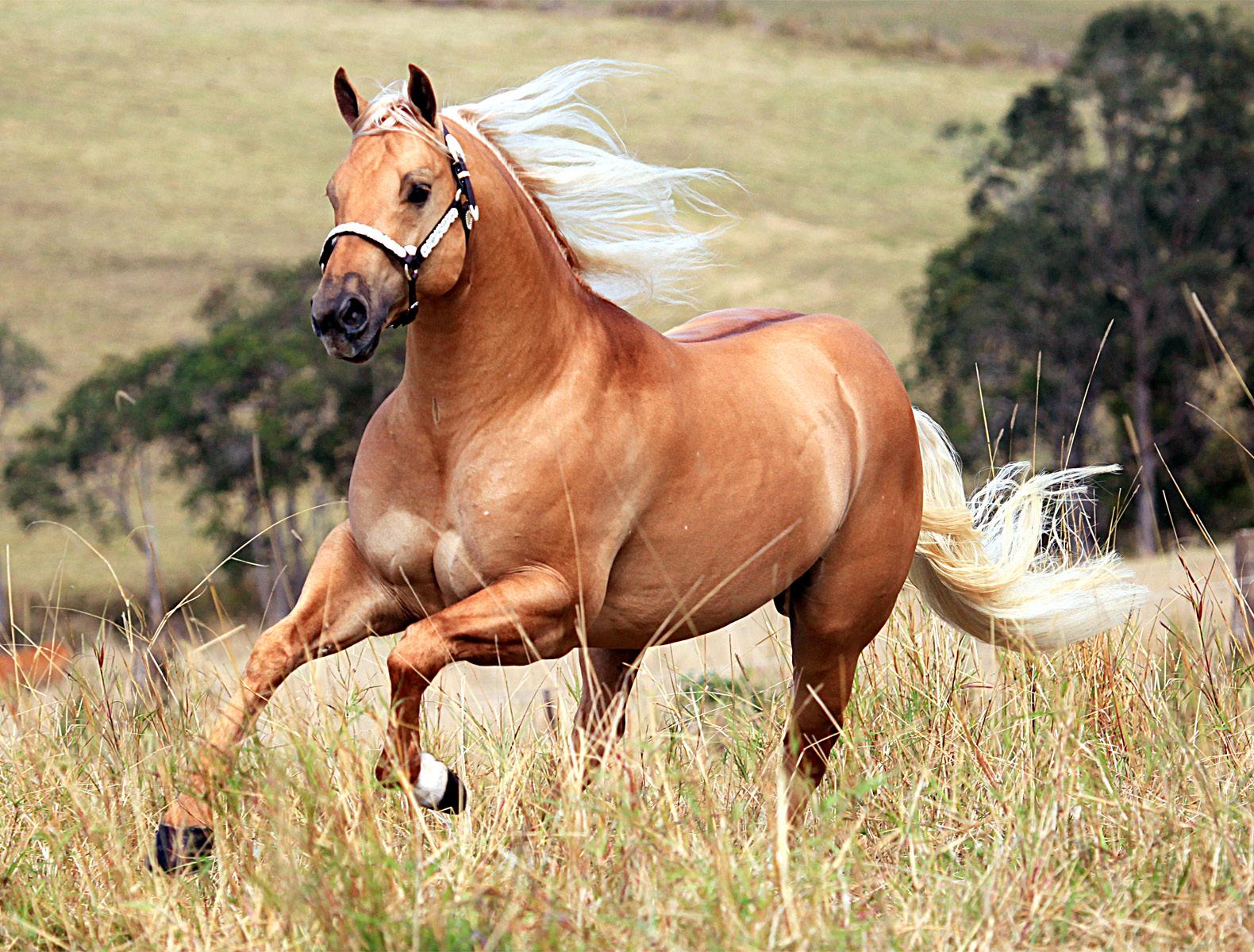
FEATURE Greys are always born another colour before turning grey, often becoming dappled in the process.
The dilution of cream
The cream gene is responsible for taking a base colour and lightening it, especially the colour red. How light it gets generally depends on how many copies of the cream gene are present: one or two. The cream gene is able to act on red pigment much more than it can on black. We’ve all had a golden palomino catch our eye at some point or another. Well, it turns out that genetically a palomino is actually a chestnut diluted with at least one copy of the cream gene, which lightens the body as well as the mane, tail and points.
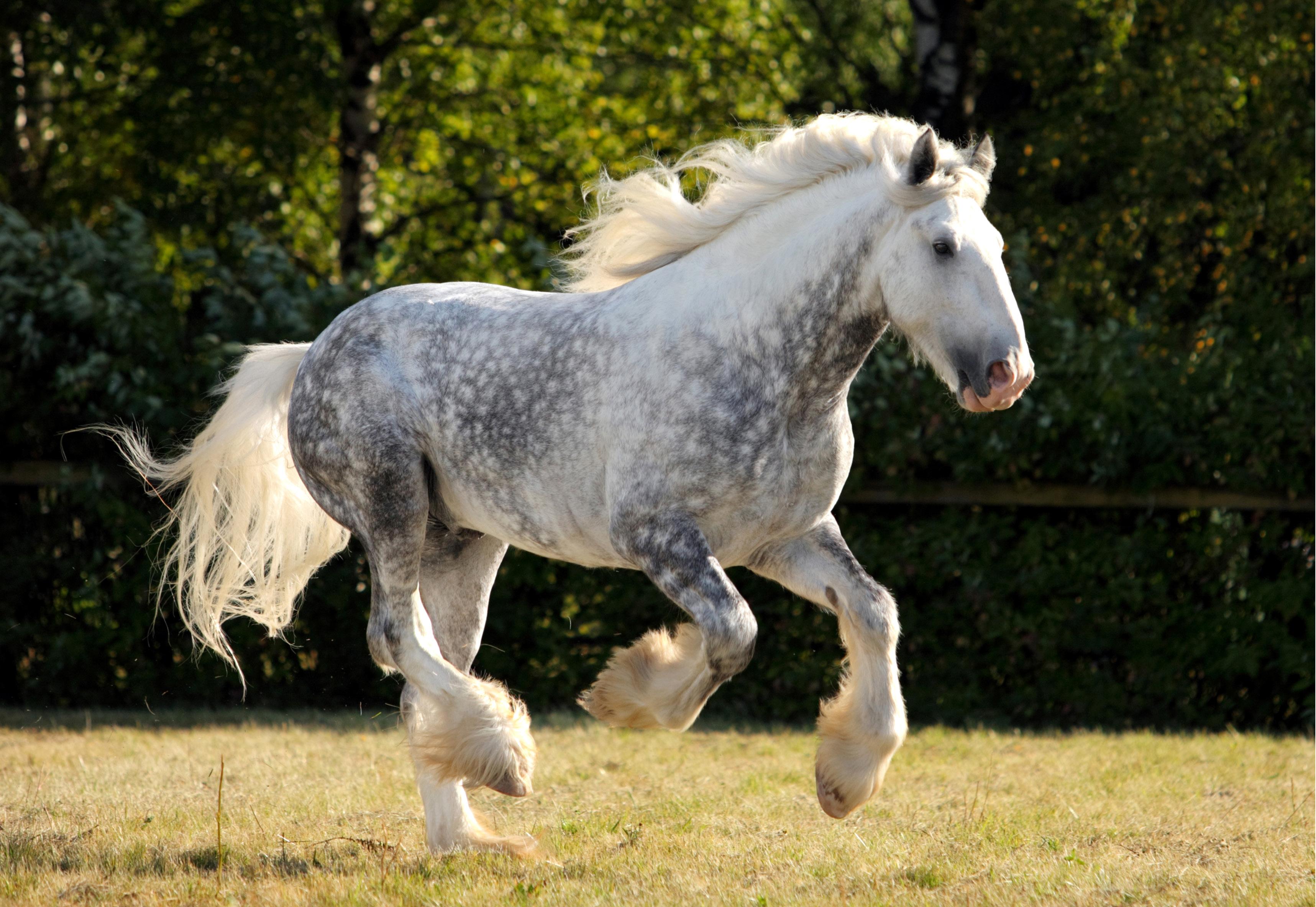
Buckskin is the result of the cream gene acting on a bay horse. The red component of the horse’s body is lightened, but the black mane, tail and points stay black.
Smokey black (or black buckskin) is the influence of the cream gene on black. You may recall we said cream doesn’t have much impact on black and for some horses that’s true – they simply look black. There are however, instances in which the cream gene changes the horse’s appearance, and when it does the result is often the colour of high-quality chocolate, a colour seen in some Warmbloods.
Shining silver
In contrast to the cream gene, which acts mainly on red pigment, the silver gene acts primarily on black pigment. “A chestnut horse that has a silver gene looks like a normal chestnut, but if a black horse gets a silver gene, you get that beautiful, creamy mane and tail, and a dark chocolate body, which gives you what’s called a silver dapple or black silver, a stunning colour,” says Kao. But this colour also comes with a word of caution: “It’s associated with eye abnormalities at times, not necessarily severe, but it’s worth having a vet check the horse out to be safe,” she advises.
Buckskin’s a colour, dun’s a gene
The dun gene’s effect is different to the cream gene – it changes any kind of pigment, not just the reds. “If you have a chestnut horse with a dun gene, it will be a red dun,” says Kao. A key feature of the gene is the always-present dorsal stripe. You can also get faint zebra striping on the legs, dun ear-tips and potentially a frosting of light hairs down either side of the mane and tail. A good example of this is the Norwegian Fjord Horse.
Kao describes a genetic combination that is particularly striking: “On a black horse, the dun gene creates a beautiful colour – it’s a slate grey – with the dorsal stripe. We’ll potentially get the striping on the legs, the darker face, the darker ear tips and the lighter frosting down the sides of the mane and tail.” This colour is termed grullo, blue dun or mouse dun, depending on which breed is being identified.

WINTER WARMERS
Why shiver through winter? Embrace your inner style queen and shine.
1


4 2
5 3
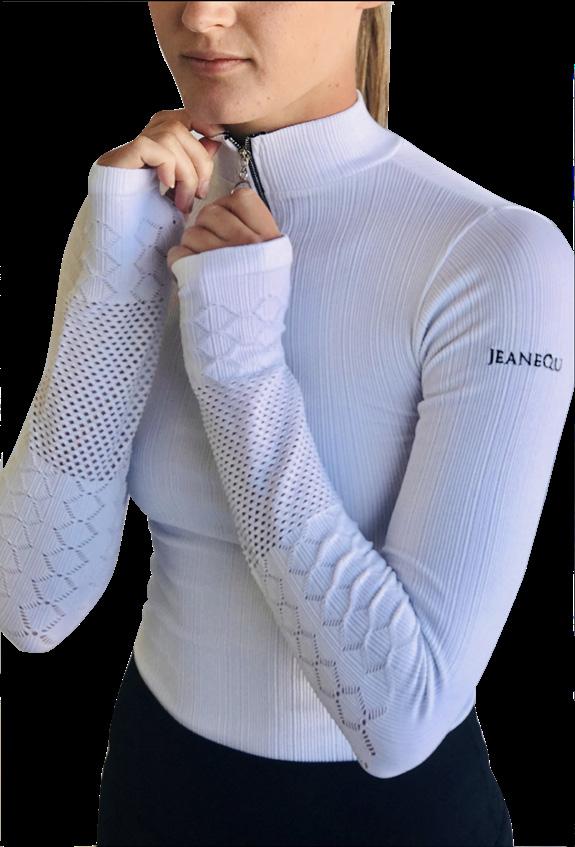
1. ARIAT Women’s Kilter Insulated Vest Bronze Brown – $184.95. 2. JUST COUNTRY Women’s Francis Softshell Jacket Black – $99.95. 3. NICKY MARIE Butt-loving breeches offer the comfort and ease of riding tights, with the style and finesse of traditional jodphurs – $139.00. 4. PERFORMARIDE Freedom Hybrid Riding Jacket, combining the feather soft puffer front and back with stretch side and arms – $119.00. 5. GISELLE Equestrian Base Layer in White – made from light-midweight ribbed fabric giving you a flattering, sculpted silhouette, lots of stretch, moulding to fit back to your body – $85.00. Stockist info page 110.
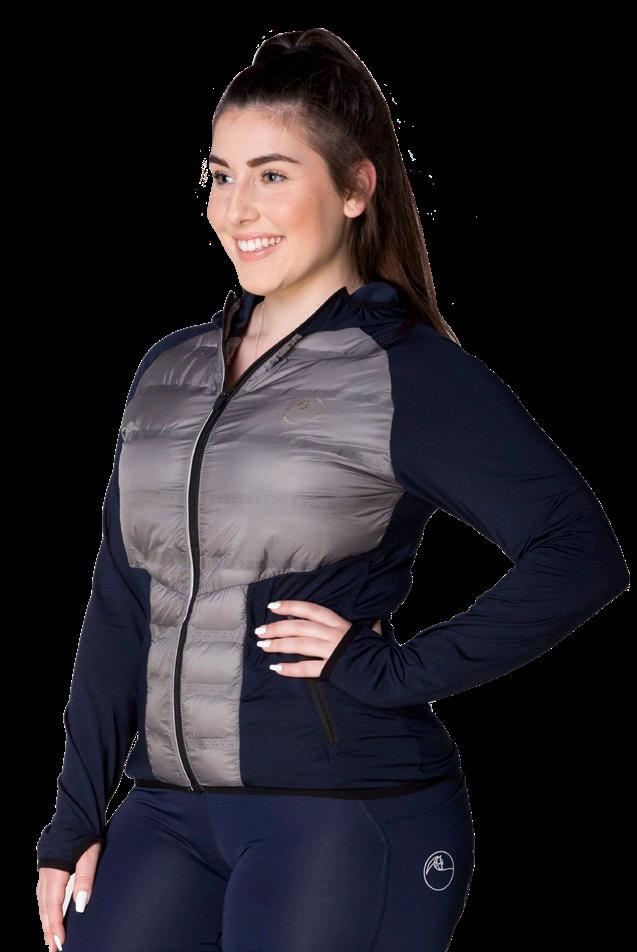
Along with bay and black, chestnut is one of the three base colours.
xxx
A bay horse with the dun gene can be mistaken for a buckskin. It presents as a similar colour, but the giveaway will be the tell-tale dorsal stripe. You can also combine the cream gene and dun gene, and this is where stuff starts getting crazy. A buckskin with the dun gene becomes a dunskin, while a palomino with the dun gene levels up to a dunalino! In both cases, you will end up with lighter coloured horses, due to the coat lightning effect of each gene. The dorsal stripes will be present, but they too will be paler.
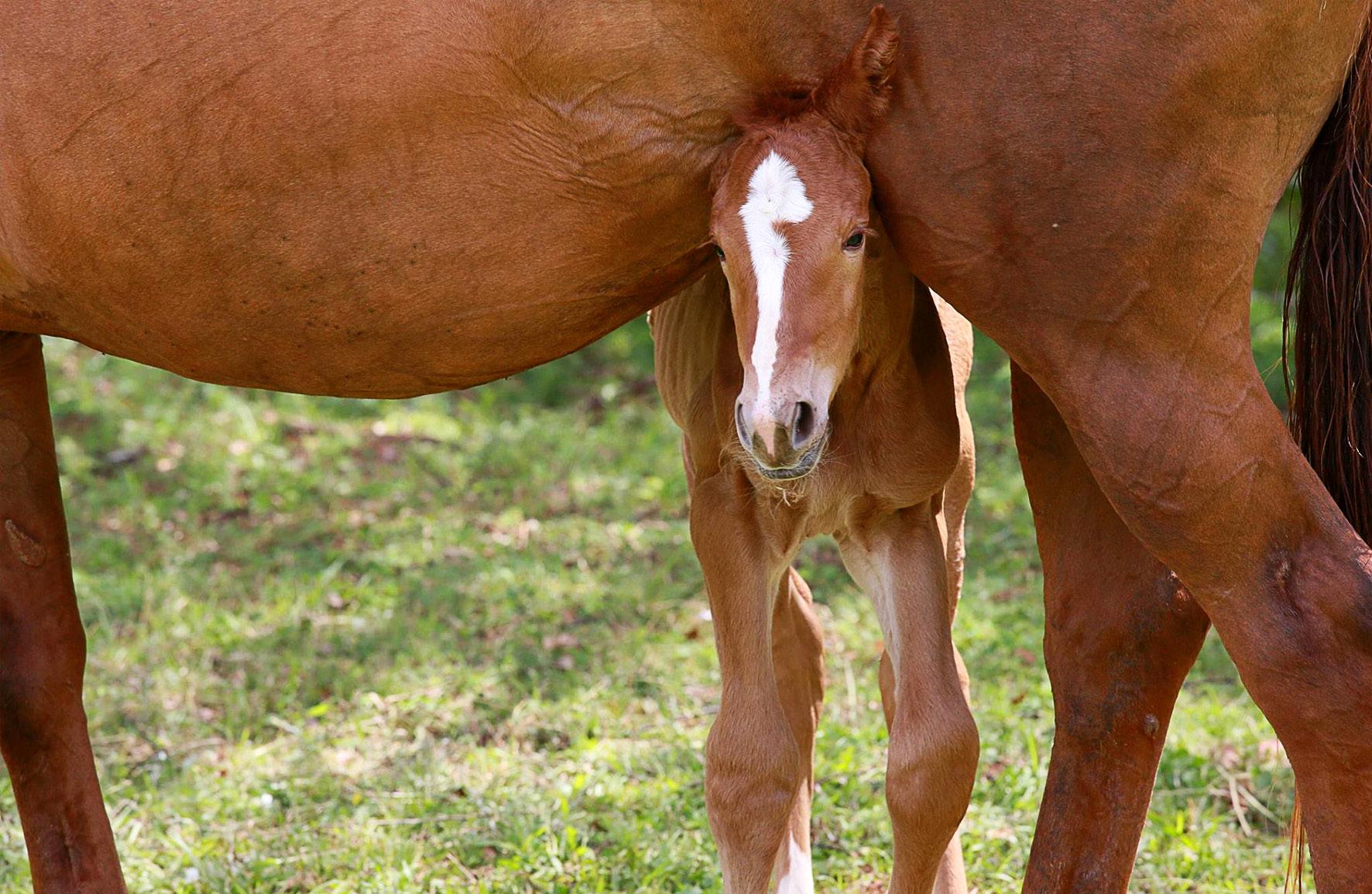
On top of these, there are many more genes that create other coat colour effects. Next issue we’ll discuss some of the even rarer dilute genes, as well as white genes and how they can result in white markings or all-over body patches, and which ones are linked to potential health issues.
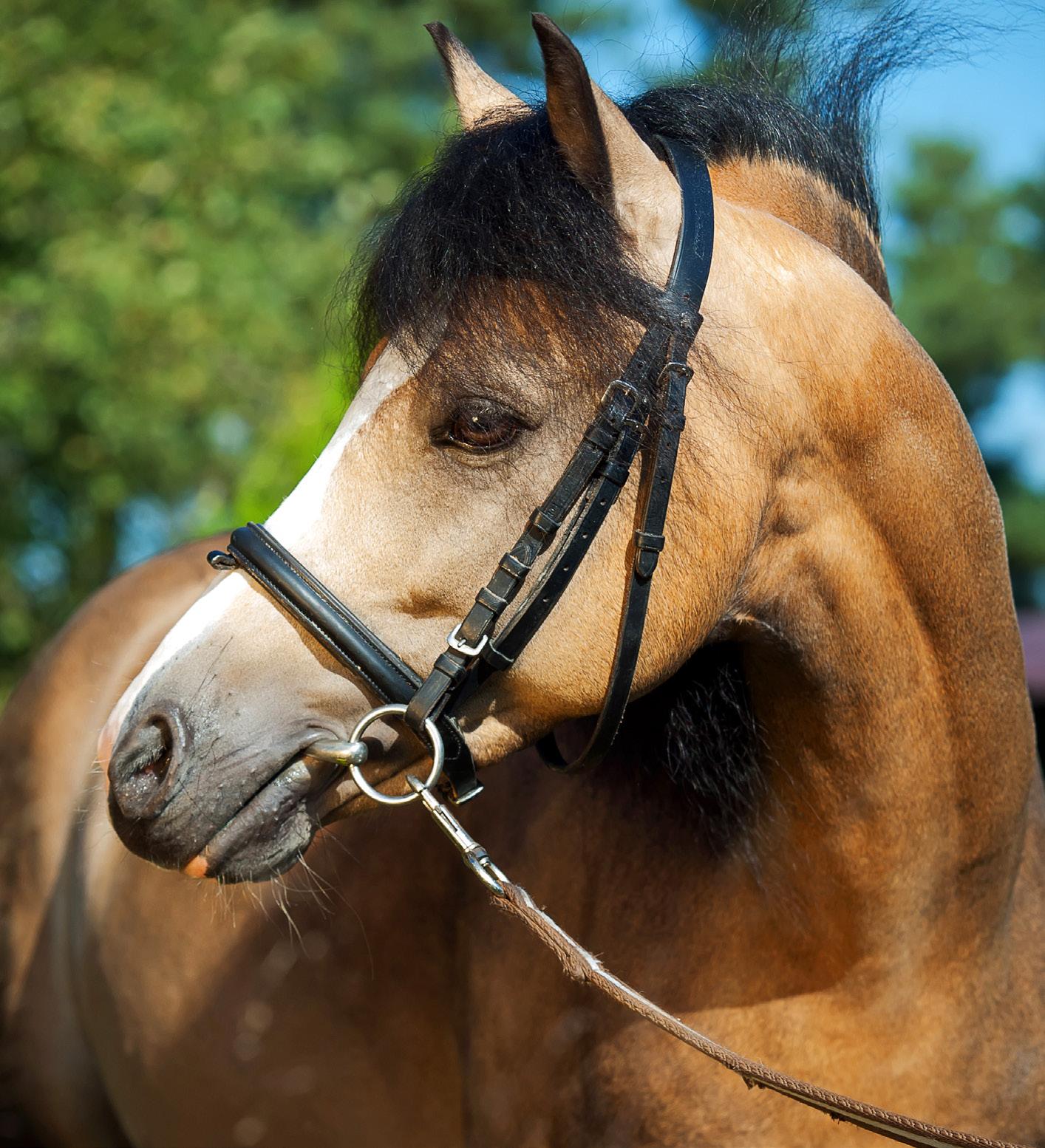
Don’t miss Part Two of this fascinating series in our July/August issue. But in the meantime, visit www.practicalhorsegenetics.com.au for more information. Buckskin is the result of the cream gene acting on a bay horse.










